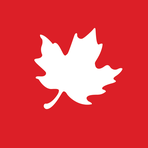Trudeau's Departure: A Political Earthquake in Canada
January 7, 2025, 9:35 pm
Donald J. Trump
Verified account
Location: United States, Virginia, Arlington
Employees: 201-500
Founded date: 2015
The political landscape in Canada is shifting. Prime Minister Justin Trudeau, after nearly a decade in power, has announced his resignation. This decision comes amid a storm of internal dissent within the Liberal Party and external pressures from the incoming U.S. administration. Trudeau's exit marks a pivotal moment in Canadian politics, akin to a ship losing its captain just before a turbulent sea.
Trudeau's announcement, made on January 6, 2025, was not unexpected. Discontent had been brewing within his party for months. Lawmakers were increasingly vocal about their frustrations, and the pressure was palpable. Trudeau, once a beacon of progressive leadership, now finds himself navigating a ship riddled with leaks. His party's dismal performance in pre-election polls signaled that the tide was turning against him.
The timing of his resignation is critical. With U.S. President-elect Donald Trump poised to take office, the stakes are high. Trump has promised steep tariffs on Canadian imports, a looming economic storm that Canada must weather. Trudeau's decision to step down before the Liberal Party's national caucus meeting appears strategic. By resigning voluntarily, he aims to avoid the perception of being ousted by his own party.
However, the reality is stark. Trudeau's leadership has been marred by infighting and a lack of direction. His recent attempts to demote Finance Minister Chrystia Freeland backfired spectacularly, leading to her resignation and further eroding his support. The internal discord has alarmed business groups and provincial leaders, who fear that a lack of unity could leave Canada vulnerable in the face of impending tariffs.
The Liberal Party now faces a daunting challenge. With the next federal election mandated by October 2025, they must rally behind a new leader capable of restoring public confidence. Polls indicate that the Conservatives, led by Pierre Poilievre, hold a commanding lead. A recent survey showed the Conservatives with a 25-point advantage, with 45% of Canadians favoring them over the Liberals. Poilievre is viewed as better equipped to handle the Trump administration, a stark contrast to Trudeau's waning influence.
Trudeau's tenure has been a complex tapestry of progressive ideals and contentious relationships, particularly with Trump. Their interactions have often been fraught, with Trump mocking Trudeau as "Governor Justin Trudeau of the Great State of Canada." This dynamic has only intensified as Trump prepares to impose tariffs, framing them as necessary to combat what he describes as a "caravan invasion" and the flow of fentanyl into the U.S.
As Trudeau steps down, the question looms: who will take the helm? Potential candidates include Freeland and former central banker Mark Carney, both of whom have expressed gratitude for Trudeau's service. However, the party remains divided. Some members lean towards a pro-business approach, while others advocate for a more social democratic stance. The next leader will need to navigate these internal divisions while also addressing the pressing external threats.
The prorogation of parliament until March 24 adds another layer of complexity. This move allows the Liberal Party to choose a new leader without the immediate pressure of an election. However, it could also backfire, as voters may perceive it as a delay tactic. Canadians are eager for change, and the longer the Liberals remain in disarray, the more likely they are to lose support.
The stakes are high for Canada. The country needs a steady hand to navigate the turbulent waters ahead. With Trump’s administration promising to shake up trade relations, the new leader must be prepared to engage in a delicate dance with the U.S. While Trudeau's departure may open the door for fresh leadership, it also raises concerns about the party's ability to unite and present a cohesive front.
As the dust settles from Trudeau's resignation, the political landscape in Canada is poised for transformation. The Liberal Party must confront its internal challenges while also preparing for the external pressures that lie ahead. The next few months will be crucial. The choice of a new leader could either revitalize the party or seal its fate in the upcoming election.
In conclusion, Trudeau's resignation is more than just a political shift; it is a wake-up call for the Liberal Party. The time for introspection and unity is now. As Canada stands on the brink of change, the question remains: can the Liberals rise from the ashes of infighting and discontent, or will they succumb to the tides of opposition? The answer will shape the future of Canadian politics for years to come.
Trudeau's announcement, made on January 6, 2025, was not unexpected. Discontent had been brewing within his party for months. Lawmakers were increasingly vocal about their frustrations, and the pressure was palpable. Trudeau, once a beacon of progressive leadership, now finds himself navigating a ship riddled with leaks. His party's dismal performance in pre-election polls signaled that the tide was turning against him.
The timing of his resignation is critical. With U.S. President-elect Donald Trump poised to take office, the stakes are high. Trump has promised steep tariffs on Canadian imports, a looming economic storm that Canada must weather. Trudeau's decision to step down before the Liberal Party's national caucus meeting appears strategic. By resigning voluntarily, he aims to avoid the perception of being ousted by his own party.
However, the reality is stark. Trudeau's leadership has been marred by infighting and a lack of direction. His recent attempts to demote Finance Minister Chrystia Freeland backfired spectacularly, leading to her resignation and further eroding his support. The internal discord has alarmed business groups and provincial leaders, who fear that a lack of unity could leave Canada vulnerable in the face of impending tariffs.
The Liberal Party now faces a daunting challenge. With the next federal election mandated by October 2025, they must rally behind a new leader capable of restoring public confidence. Polls indicate that the Conservatives, led by Pierre Poilievre, hold a commanding lead. A recent survey showed the Conservatives with a 25-point advantage, with 45% of Canadians favoring them over the Liberals. Poilievre is viewed as better equipped to handle the Trump administration, a stark contrast to Trudeau's waning influence.
Trudeau's tenure has been a complex tapestry of progressive ideals and contentious relationships, particularly with Trump. Their interactions have often been fraught, with Trump mocking Trudeau as "Governor Justin Trudeau of the Great State of Canada." This dynamic has only intensified as Trump prepares to impose tariffs, framing them as necessary to combat what he describes as a "caravan invasion" and the flow of fentanyl into the U.S.
As Trudeau steps down, the question looms: who will take the helm? Potential candidates include Freeland and former central banker Mark Carney, both of whom have expressed gratitude for Trudeau's service. However, the party remains divided. Some members lean towards a pro-business approach, while others advocate for a more social democratic stance. The next leader will need to navigate these internal divisions while also addressing the pressing external threats.
The prorogation of parliament until March 24 adds another layer of complexity. This move allows the Liberal Party to choose a new leader without the immediate pressure of an election. However, it could also backfire, as voters may perceive it as a delay tactic. Canadians are eager for change, and the longer the Liberals remain in disarray, the more likely they are to lose support.
The stakes are high for Canada. The country needs a steady hand to navigate the turbulent waters ahead. With Trump’s administration promising to shake up trade relations, the new leader must be prepared to engage in a delicate dance with the U.S. While Trudeau's departure may open the door for fresh leadership, it also raises concerns about the party's ability to unite and present a cohesive front.
As the dust settles from Trudeau's resignation, the political landscape in Canada is poised for transformation. The Liberal Party must confront its internal challenges while also preparing for the external pressures that lie ahead. The next few months will be crucial. The choice of a new leader could either revitalize the party or seal its fate in the upcoming election.
In conclusion, Trudeau's resignation is more than just a political shift; it is a wake-up call for the Liberal Party. The time for introspection and unity is now. As Canada stands on the brink of change, the question remains: can the Liberals rise from the ashes of infighting and discontent, or will they succumb to the tides of opposition? The answer will shape the future of Canadian politics for years to come.

